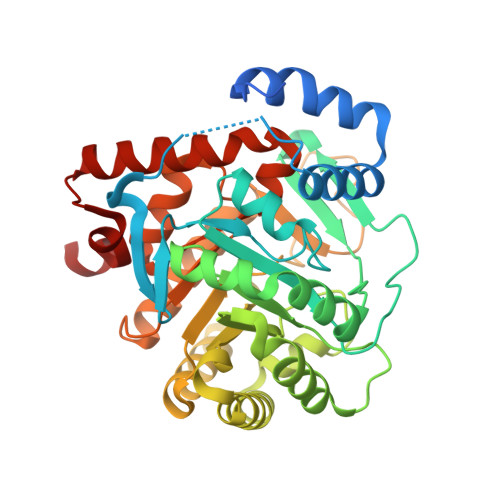Dual binding mode of a novel series of DHODH inhibitors.
Baumgartner, R., Walloschek, M., Kralik, M., Gotschlich, A., Tasler, S., Mies, J., Leban, J.(2006) J Med Chem 49: 1239-1247
- PubMed: 16480261
- DOI: https://doi.org/10.1021/jm0506975
- Primary Citation of Related Structures:
2BXV, 2FPT, 2FPV, 2FPY, 2FQI - PubMed Abstract:
Human dihydroorotate dehydrogenase (DHODH) represents an important target for the treatment of hyperproliferative and inflammatory diseases. In the cell DHODH catalyzes the rate-limiting step of the de novo pyrimidine biosynthesis. DHODH inhibition results in beneficial immunosuppressant and antiproliferative effects in diseases such as rheumatoid arthritis. Here, we present high-resolution X-ray structures of human DHODH in complex with a novel class of low molecular weight compounds that inhibit the enzyme in the nanomolar range. Some compounds showed an interesting dual binding mode within the same cocrystal strongly depending on the nature of chemical substitution. Measured in vitro activity data correlated with the prevailing mode of binding and explained the observed structure-activity relationship. Additionally, the X-ray data confirmed the competitive nature of the inhibitors toward the putative ubiquinone binding site and will guide structure-based design and synthesis of molecules with higher activity.
- 4SC AG, Am Klopferspitz 19a, 82152 Martinsried, Germany. baumgartner@4sc.com
Organizational Affiliation:





















